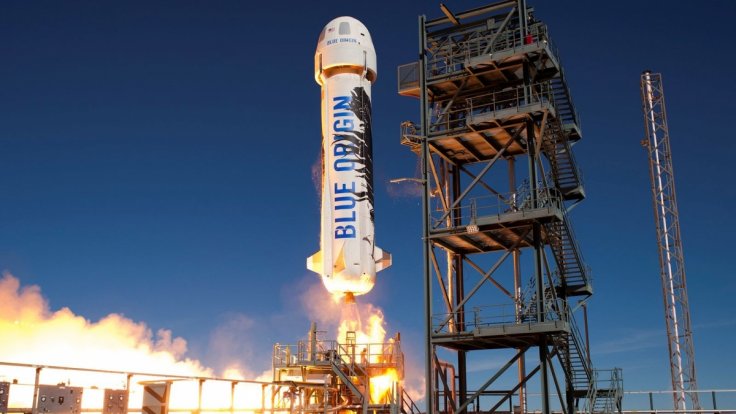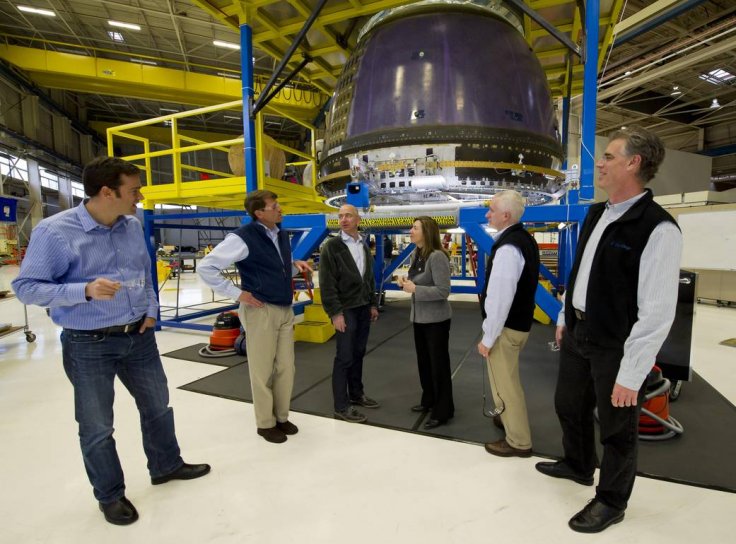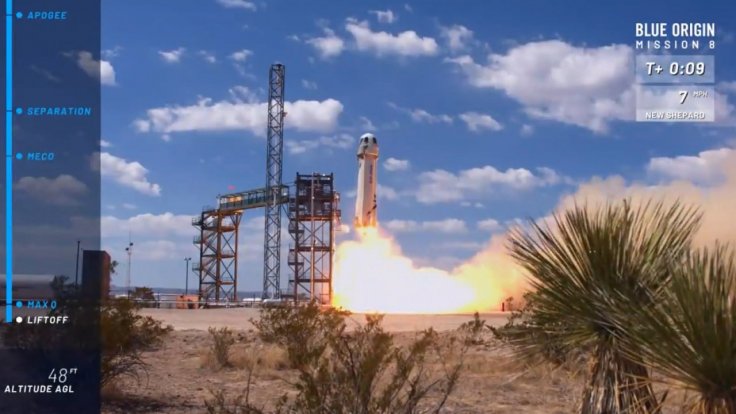Jeff Bezos, the founder of Amazon and the richest man on earth, will be going on his maiden trip to space when he participates in the first passenger flight being made by his space company, Blue Origin, on July 20 to mark the anniversary of the Apollo 11 moon landing. That surely will be a big achievement for Bezos, who can literally do anything he wants with the massive wealth he has.
It sounds exciting but there are also a lot of risks involved in the flight. In fact, when the billionaire climbs into the New Shepard capsule for its first passenger trip to space next month, his safety will be almost entirely in the hands of his company Blue Origin.
Bezos and His Adventure

Bezos made the big announcement that he would be going on a trip to space on Monday. And he is excited. "To see the Earth from space, it changes you," Bezos said in his video announcement, shared to his social channels. "It changes your relationship with this planet, with humanity. It's one Earth. I want to go on this flight because it's the thing I've wanted to do all my life. It's an adventure. It's a big deal for me."
Understandably, Bezos wants to join the handful of tourists who have flown in space as the emerging industry prepares to launch hundreds of people aloft. As of now, these visitors and their trip aren't protected by the meticulous federal safety regulations that govern commercial air travel.
The space trip will reportedly be quite short, totaling just 11 minutes. However, those 11 minutes will come for a hefty price tag and also involve huge risk. According to CNBC, the going rate for a ticket on the flight with Bezos is up to $2.8 million.
That said, Bezos won't be the only one on this trip. Common people too can join him. Online bidding for the seat alongside Bezos will proceed until June 10. A live auction for it will be held on June 12.
How Risky Is It?

Although the risks involved may not always be astronomical since Blue Origin has spent most part of the last decade running the suborbital New Shepard rocket Bezos be riding on through a series of successful test flights. Still it will be the very first crewed flight of New Shepard, a fully autonomous suborbital rocket and spacecraft system that is designed to take ticket holders on brief joy rides to space. Hence it won't be without risk.
Suborbital Flight
New Shepard is a suborbital rocket, which means unlike orbital rockets where the astronaut and the spaceship circles the earth, it will be going up and down and it will be done in less time — about 11 minutes. However, those inside the New Shepard will go more than 62 miles above Earth, which is roughly the edge of outer space.
Orbital rockets need to drum up enough power to hit at least 17,000 miles per hour, or what's known as orbital velocity, so that the spacecraft has enough energy to continue orbiting around the Earth and not get dragged back down by gravity.

Suborbital flights require comparatively lower speed and energy, which means less time the rocket is required to burn, lower temperatures scorching the outside of the spacecraft, less force and compression ripping at the spacecraft, and generally lower chances of anything going wrong.
Also, suborbital flights also don't require high speed or the intense process to re-enter the Earth's atmosphere at incredible speeds. Hence they are less riskier than orbital flights. Blue Origin's New Shepard capsule, which is fully autonomous and does not require a pilot, has never had an explosive mishap in 15 test flights.
High speeds and high altitudes involve a lot of risks, and even small errors can have big consequences. Earth's atmosphere is generally not considered survivable for significant amounts of time above altitudes of 50,000 feet without a spacesuit, and Bezos will be traveling up to 350,000 feet.
So, the risk exists. One of Virgin Galactic's suborbital space planes, for example, broke apart in 2014 when one of the vehicle's copilots prematurely deployed the feathering system designed to keep the craft stable as it made its descent. The added drag on the plane ripped it to pieces, killing one of the pilots.
Passenger Training

Although it looks easy, one task that passengers need to master before they fly is to unbuckle and then rebuckle their seatbelts, so they can float around and watch the Earth roll by through the capsule's massive windows.
It is not known what kind of training the Bezos brothers will receive in advance of their flight, and about how control and navigation of the capsule works. Since NASA isn't involved directly in training, it needs to be seen how passengers are trained before the maiden flight.
Passengers who will be flying on the New Shepard must sign a form waiving their right to sue Bezos's Blue Origin LLC in the event of an accident.
In 2004, Congress agreed to allow the space-tourism industry self-regulate so that it can speed up preparations for passenger flights. However, years of delays, including the Virgin Galactic accident that killed the pilot in 2014, has pushed back the start of flights for fare-paying passengers.
Regulators and industry executives are debating whether to introduce tougher rules, such as requiring passengers to be trained for the rigors of reaching the edge of space. The companies already offer some training for their short flights, which include periods of high G-forces and the possible disorientation that can come with weightlessness.









